 One of the reasons why it is so hard to forecast economic growth and other macroeconomic indicators is that economies can be affected by economic shocks. Sometimes the effects of shocks are large. The problem with shocks is that, by their very nature, they are unpredictable or hard to predict.
One of the reasons why it is so hard to forecast economic growth and other macroeconomic indicators is that economies can be affected by economic shocks. Sometimes the effects of shocks are large. The problem with shocks is that, by their very nature, they are unpredictable or hard to predict.
A case in point is the current crisis in Ukraine. First there was the uprising in Kiev, the ousting of President Yanukovich and the formation of a new government. Then there was the seizing of the Crimean parliament by gunmen loyal to Russia. The next day, Saturday March 1, President Putin won parliamentary approval to invade Ukraine and Russian forces took control of the Crimea.
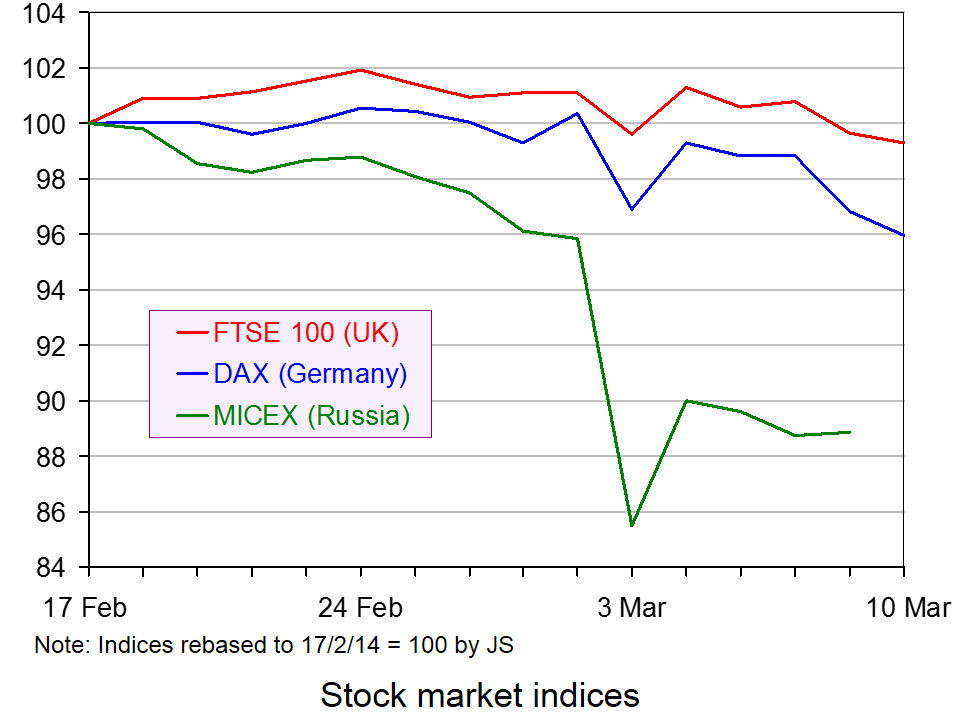 On Monday 3 March, stock markets fell around the world. The biggest falls were in Russia (see chart). In other stock markets, the size of the falls was directly related to the closeness of trade ties with Russia. The next day, with a degree of calm descending on the Crimea and no imminent invasion by Russia of other eastern parts of Ukraine, stock markets rallied.
On Monday 3 March, stock markets fell around the world. The biggest falls were in Russia (see chart). In other stock markets, the size of the falls was directly related to the closeness of trade ties with Russia. The next day, with a degree of calm descending on the Crimea and no imminent invasion by Russia of other eastern parts of Ukraine, stock markets rallied.
What will happen to countries’ economies depends on what happens as the events unfold. There could be a continuing uneasy peace, with the West effectively accepting, despite protests, the Russian control of the Crimea. But what if Russia invades eastern Ukraine and tries to annex it to Russia or promote its being run as a separate country? What if the West reacted strongly by sending in troops? What if the reaction were simply sanctions? That, of course would depend on the nature of those sanctions.
Some of the possibilities could have serious effects on the world economy and especially the Russian economy and the economies of those with strong economic ties to Russia, such as those European countries relying heavily on gas and oil imports from Russia through the pipeline network.
Economists are often criticised for poor forecasts. But when economic shocks can have large effects and when they are hard to predict by anyone, not just economists, then it is hardly surprising that economic forecasts are sometimes highly inaccurate.
What Wall Street is watching in Ukraine crisis USA Today (3/3/14)
Ukraine’s economic shock waves – magnitude uncertain Just Auto, Dave Leggett (7/3/14)
Ukraine: The end of the beginning? The Economist (8/3/14)
Russia will bow to economic pressure over Ukraine, so the EU must impose it The Guardian, Guy Verhofstadt (6/3/14)
Russia paying price for Ukraine crisis CNN Money, Mark Thompson (6/3/14)
Ukraine Crimea: Russia’s economic fears BBC News, Nikolay Petrov (7/3/14)
How Russia’s conflict with Ukraine threatens vital European trade links The Telegraph, Szu Ping Chan (8/3/14)
Will a Russian invasion of Ukraine push the west into an economic war? Channel 4 News, Paul Mason (2/3/14)
Who loses from punishing Russia? BBC News, Robert Peston (4/3/14)
Should Crimea be leased to Russia? BBC News, Robert Peston (7/3/14)
The Ukraine Economic Crisis Counter Punch, Jack Rasmus (7-9/3/14)
UK price rise exposes failure to prepare for food and fuel shocks The Guardian, Phillip Inman (2/3/14)
Questions
- What sanctions could the West realistically impose on Russia?
- How would sanctions against Russia affect (a) the Russian economy and (b) the economies of those applying the sanctions?
- Which industries would be most affected by sanctions against Russia?
- Is Russia likely to bow to economic pressure from the West?
- Should Crimea be leased to Russia?
- Is the behaviour of stock markets a good indication of people’s expectations about the real economy?
- Identify some other economic shocks (positive and negative) and their impact.
- Could the financial crisis of 2007/8 be described as an economic shock? Explain.
 As the old year gives way to the new, papers have been full of economic forecasts for the coming year. This year is no exception. The authors of the articles below give their predictions of what is to come for the global economy and, for the most part, their forecasts are relatively optimistic – but not entirely so. Despite a sunny outlook, there are various dark clouds on the horizon.
As the old year gives way to the new, papers have been full of economic forecasts for the coming year. This year is no exception. The authors of the articles below give their predictions of what is to come for the global economy and, for the most part, their forecasts are relatively optimistic – but not entirely so. Despite a sunny outlook, there are various dark clouds on the horizon.
Most forecasters predict a higher rate of global economic growth in 2014 than in 2013 – and higher still in 2015. The IMF, in its October forecasts, predicted global growth of 3.6% in 2014 (up from 2.9% in 2013) and 4.0% in 2015.
Some countries will do much better than others, however. The USA, the UK, Germany and certain developing countries are forecast to grow more strongly. The eurozone as a whole, however, is likely to see little in the way of growth, as countries such as Greece, Spain, Portugal and Italy continue with austerity policies in an attempt to reduce their debt. 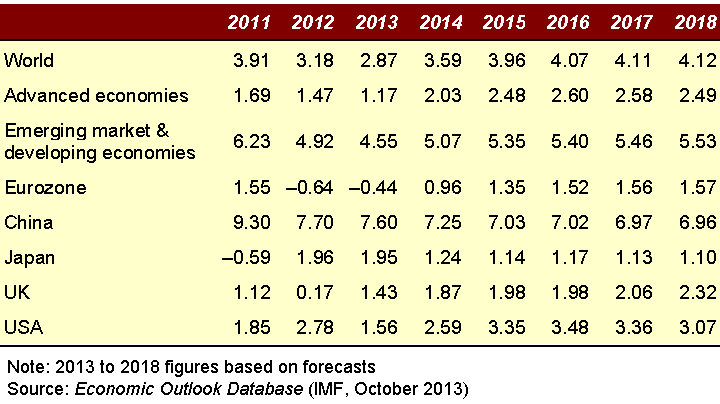 Chinese growth has slowed, as the government seeks to rebalance the economy away from exports and investment in manufacturing towards consumption, and services in particular. It is still forecast to be 7.3% in 2014, however – well above the global average. Japanese growth has picked up in response to the three arrows of fiscal, monetary and supply-side policy. But this could well fade somewhat as the stimulus slows. The table shows IMF growth forecasts for selected countries and groups of countries to 2018.
Chinese growth has slowed, as the government seeks to rebalance the economy away from exports and investment in manufacturing towards consumption, and services in particular. It is still forecast to be 7.3% in 2014, however – well above the global average. Japanese growth has picked up in response to the three arrows of fiscal, monetary and supply-side policy. But this could well fade somewhat as the stimulus slows. The table shows IMF growth forecasts for selected countries and groups of countries to 2018.
Much will depend on what happens to monetary policy around the world. How quickly will monetary stimulus taper in the USA and in Japan? Will the ECB introduce more aggressively expansionary monetary policy? When will the Bank of England start raising interest rates?
Growth within countries is generally favouring those on higher incomes, with the gap between rich and poor set to continue widening over the coming years. The pay of top earners has continued to rise considerably faster than prices, while increasingly flexible labour markets and squeezed welfare budgets have seen a fall in living standards of many on low incomes. According to a Which? survey (reported in the Independent article below), in the UK:
Only three in ten expect their family’s situation to improve in the new year, while 60% said they are already dreading the arrival of their winter energy bill. The Which? survey also found that 13 million people could afford to pay for Christmas only by borrowing, with more than four in ten using credit cards, loans or overdrafts to fund their festive spending. A third of people (34%) also dipped into their savings, taking an average of £450 from their accounts.
If recovery is based on borrowing, with real incomes falling, or rising only very slowly, household debt levels are likely to increase. This has been stoked in the UK by the ‘Help to Buy‘ scheme, which has encouraged people to take on more debt and has fuelled the current house price boom. This could prove damaging in the long term, as any decline in confidence could lead to a fall in consumer expenditure once more as people seek to reduce their debts.
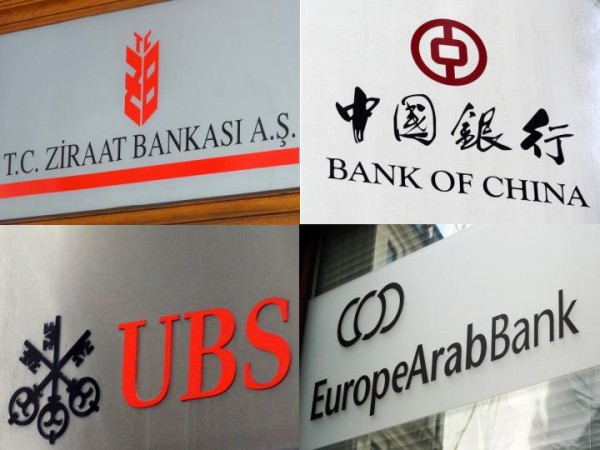 And what of the global banking system? Is it now sufficiently robust to weather a new crisis. Is borrowing growing too rapidly? Is bank lending becoming more reckless again? Are banks still too big to fail? Is China’s banking system sufficiently robust? These are questions considered in the articles below and, in particular, in the New York Times article by Gordon Brown, the former Prime Minister and Chancellor of the Exchequer.
And what of the global banking system? Is it now sufficiently robust to weather a new crisis. Is borrowing growing too rapidly? Is bank lending becoming more reckless again? Are banks still too big to fail? Is China’s banking system sufficiently robust? These are questions considered in the articles below and, in particular, in the New York Times article by Gordon Brown, the former Prime Minister and Chancellor of the Exchequer.
Articles
Global economy: hopes and fears for 2014The Observer, Heather Stewart and Larry Elliott (29/12/13)
Looking ahead to 2014 BBC News, Linda Yueh (20/12/13)
Low hopes for a happy new financial year in 2014 Independent, Paul Gallagher (29/12/13)
Brisk UK economic growth seen in 2014 fuelled by spending – Reuters poll Reuters, Andy Bruce (12/12/13)
GLobal Economy: 2014 promises faster growth, but no leap forward Reuters, Andy Bruce (29/12/13)
My 2014 Economic Briefing Huffington Post, Tony Dolphin (27/12/13)
Three UK Economy Stories that will Dominate in 2014 International Business Times, Shane Croucher (27/12/13)
Who You Calling a BRIC? Bloomberg, Jim O’Neill (12/11/13)
Hope and Hurdles in 2014 Project Syndicate, Pingfan Hong (27/12/13)
On top of the world again The Economist (18/11/13)
Digging deeper The Economist (31/10/13)
BCC Economic Forecast: growth is gathering momentum, but recovery is not secure British Chambers of Commerce (12/13)
Eight predictions for 2014 Market Watch, David Marsh (30/12/13)
Stumbling Toward the Next Crash New York Times, Gordon Brown (18/12/13)
Central banks must show leadership to rejuvenate global economy The Guardian, Larry Elliott (1/1/14)
Global economy set to grow faster in 2014, with less risk of sudden shocks The Guardian, Nouriel Roubini (31/12/13)
A dismal new year for the global economy The Guardian, Joseph Stiglitz (8/1/14)
Forecasts and reports
World Economic Outlook (WEO) IMF (October 2013)
Economic Outlook OECD (November 2013)
Output, prices and jobs The Economist
Bank of England Inflation Report: Overview Bank of England (November 2013)
Questions
- What reasons are there to be cheerful about the global economic prospects for 2014 and 2015?
- Who will gain the most from economic growth in the UK and why?
- Why is the eurozone likely to grow so slowly, if at all?
- Are we stumbling towards another banking crisis, and if so, which can be done about it?
- Why has unemployment fallen in the UK despite falling living standards for most people?
- What is meant by ‘hysteresis’ in the context of unemployment? Is there a problem of hysteresis at the current time and, if so, what can be done about it?
- Explain whether the MINT economies are likely to be a major source of global economic growth in the coming year?
- Why is it so difficult to forecast the rate of economic growth over the next 12 months, let alone over a longer time period?
 It is one year since the election of Shinzo Abe in Japan. He immediately embarked on a radical economic policy to stimulate the Japanese economy, which had suffered from years of stagnation. There have been three parts (or three arrows) to his policy: fiscal policy and monetary policy to stimulate aggregate demand and supply-side policy to increase productivity.
It is one year since the election of Shinzo Abe in Japan. He immediately embarked on a radical economic policy to stimulate the Japanese economy, which had suffered from years of stagnation. There have been three parts (or three arrows) to his policy: fiscal policy and monetary policy to stimulate aggregate demand and supply-side policy to increase productivity.
As the previous post explains:
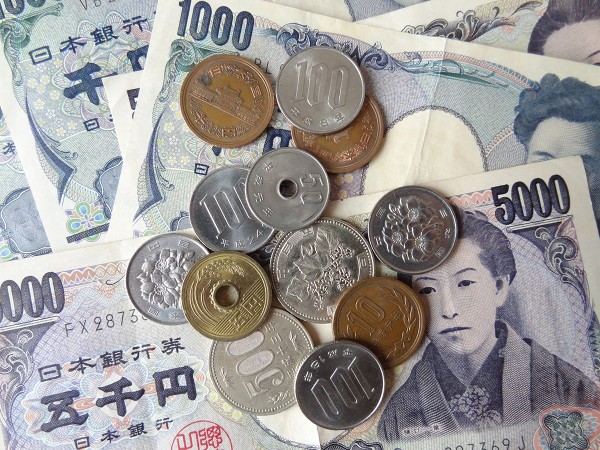 “The first arrow is monetary policy. The Bank of Japan has engaged in extensive quantitative easing through bond purchases in order to drive down the exchange rate (see A J-curve for Japan?), stimulate expenditure and increase the rate of inflation. A target inflation rate of 2% has been set by the Bank of Japan. Part of the problem for the Japanese economy over the years has been stagnant or falling prices. Japanese consumers have got used to waiting to spend in the hope of being able to buy at lower prices. Similarly, Japanese businesses have often delayed stock purchase. By committing to bond purchases of whatever amount is necessary to achieve the 2% inflation target, the central bank hopes to break this cycle and encourage people to buy now rather than later.
“The first arrow is monetary policy. The Bank of Japan has engaged in extensive quantitative easing through bond purchases in order to drive down the exchange rate (see A J-curve for Japan?), stimulate expenditure and increase the rate of inflation. A target inflation rate of 2% has been set by the Bank of Japan. Part of the problem for the Japanese economy over the years has been stagnant or falling prices. Japanese consumers have got used to waiting to spend in the hope of being able to buy at lower prices. Similarly, Japanese businesses have often delayed stock purchase. By committing to bond purchases of whatever amount is necessary to achieve the 2% inflation target, the central bank hopes to break this cycle and encourage people to buy now rather than later.
 The second arrow is fiscal policy. Despite having the highest debt to GDP ratio in the developed world, Japan is embarking on a large-scale programme of infrastructure investment and other public works. The package is worth over $100bn. The expansionary fiscal policy is accompanied by a longer-term plan for fiscal consolidation as economic growth picks up. In the short term, Japan should have no difficulty in financing the higher deficit, given that most of the borrowing is internal and denominated in yen.
The second arrow is fiscal policy. Despite having the highest debt to GDP ratio in the developed world, Japan is embarking on a large-scale programme of infrastructure investment and other public works. The package is worth over $100bn. The expansionary fiscal policy is accompanied by a longer-term plan for fiscal consolidation as economic growth picks up. In the short term, Japan should have no difficulty in financing the higher deficit, given that most of the borrowing is internal and denominated in yen.
 The third arrow is supply-side policy. On 5 June, Shinzo Abe unveiled a series of goals his government would like to achieve in order to boost capacity and productivity. These include increasing private-sector investment (both domestic and inward), infrastructure expenditure (both private and public), increasing farmland, encouraging more women to work by improving day-care facilities for children, and deregulation of both goods, capital and labour markets. The prime minister, however, did not give details of the measures that would be introduced to achieve these objectives. More details will be announced in mid-June.”
The third arrow is supply-side policy. On 5 June, Shinzo Abe unveiled a series of goals his government would like to achieve in order to boost capacity and productivity. These include increasing private-sector investment (both domestic and inward), infrastructure expenditure (both private and public), increasing farmland, encouraging more women to work by improving day-care facilities for children, and deregulation of both goods, capital and labour markets. The prime minister, however, did not give details of the measures that would be introduced to achieve these objectives. More details will be announced in mid-June.”
In the webcast and article below, Linda Yueh, the BBC’s Chief Business Correspondent, considers how effective the policies are proving and the challenges that remain.
Webcast
 Has Abenomics fixed Japan’s economic fortunes? BBC News, Linda Yueh (16/12/13)
Has Abenomics fixed Japan’s economic fortunes? BBC News, Linda Yueh (16/12/13)
Articles
Why Abenomics holds lessons for the West BBC News, Linda Yueh (13/12/13)
Japanese business confidence hits six-year high, Tankan survey shows The Guardian (16/12/13)
Data
World Economic Outlook Database IMF (Oct 2013)
Bank of Japan Statistics Bank of Japan
Economic Outlook Annex Tables OECD
Country statistical profile: Japan 2013 OECD (15/11/13)
Questions
- Demonstrate on (a) an aggregate demand and supply diagram and (b) a Keynesian 45° line diagram the effects of the three arrows (assuming they are successful) in meeting their objectives.
- Why has Japan found it so hard to achieve economic growth over the past 20 years?
- How has the Japanese economy performed over the past 12 months?
- What lessons can be learnt by the UK and eurozone countries from Japan’s three arrows?
- Why is the second arrow problematic, given the size of Japan’s general government debt? Does the proportion of Japanese debt owed overseas affect the argument?
- In what ways do the three arrows (a) support each other; (b) conflict with each other?
- Why is the structure of the labour market in Japan acting as a break on economic growth? What policies are being, or could be, pursued to tackle these structural problems?
 Nearly two years ago, France lost its triple A credit-rating and the news has only got worse. Unemployment has risen and economic growth in France has remained low and this is one of the reasons why France’s credit rating has been downgraded further from AA+ to AA. A high credit rating doesn’t guarantee market confidence, but it does help to keep the cost of borrowing for the government low. Thus, this downgrading could spell trouble for French borrowing costs.
Nearly two years ago, France lost its triple A credit-rating and the news has only got worse. Unemployment has risen and economic growth in France has remained low and this is one of the reasons why France’s credit rating has been downgraded further from AA+ to AA. A high credit rating doesn’t guarantee market confidence, but it does help to keep the cost of borrowing for the government low. Thus, this downgrading could spell trouble for French borrowing costs.
Standard and Poor’s (S&P), who downgraded the French credit rating, is expecting government debt to rise to 86% of gross domestic product and believes that unemployment will remain above 10% until 2016. While the French government has put various reforms in place to boost the struggling economy, S&P don’t believe they are sufficient and have been very public in criticising the government’s effort. They were quoted as saying:
We believe the French government’s reforms to taxation, as well as to product, services and labour markets, will not substantially raise France’s medium-term growth prospects and that on-going high unemployment is weakening support for further significant fiscal and structural policy measures.
Following the downgrading, the return for those investors purchasing French debt did begin to rise, echoing the theory that the cost of borrowing would rise.  The yield on French government 10-year bonds increased from 2.158% to 2.389%. The outlook given to France by S&P was ‘stable’, implying that there is a relatively low chance that S&P would change France’s credit-rating again in the next two years.
The yield on French government 10-year bonds increased from 2.158% to 2.389%. The outlook given to France by S&P was ‘stable’, implying that there is a relatively low chance that S&P would change France’s credit-rating again in the next two years.
Many were surprised at the downgrading of France’s credit rating, but this may be the nudge that President Hollande needs to push through extensive labour market reforms with the aim of reducing unemployment and generating growth in the economy. Despite this latest move by S&P, the other credit rating agencies have yet to take similar action. Perhaps they are more convinced by the Finance Minister, Pierre Moscovici who claims that France’s debt is ‘one of the safest and most liquid in the world.’ He commented that:
 They are underestimating France’s ability to reform, to pull itself up … During the last 18 months the government has implemented major reforms aimed at improving the French economic situation, restoring its public finances and its competitiveness.
They are underestimating France’s ability to reform, to pull itself up … During the last 18 months the government has implemented major reforms aimed at improving the French economic situation, restoring its public finances and its competitiveness.
It will take some time for the full impact of this development in France’s economy to become apparent. The cost of borrowing has already risen only time will tell what will happen to market confidence over the coming weeks. However, what is certain is that pressure is already mounting on Francois Hollande. The following articles consider the French economy.
France told to reform labour market after second credit rating downgrade The Guardian, Phillip Inman (8/13/13)
France’s credit rating cut by S&P to AA BBC News (8/11/13)
S&P lowers France rating on reform doubts, markets unfazed Reuters, Nicholas Vinocur (8/11/13)
Hollande approval rating slumps as France downgraded The Telegraph, James Titcomb (8/11/13)
S&P cuts France’s credit rating by one notch to double-A Wall Street Journal, William Horobin (8/11/13)
Five charts that show the state of the French economy The Telegraph (8/11/13)
France rating downgrade heaps pressure on Francois Hollande Financial Times, Michael Stothard (8/11/13)
Questions
- What does a double A rating mean for the French economy?
- Which factors will be considered when a ratings agency decides to change a country’s credit rating?
- France’s unemployment rate is one of the key factors that S&P has considered. Why is France’s unemployment rate so high? Which type(s) of unemployment are increasing?
- Use a diagram to illustrate the unemployment that France is facing.
- If a country does see its credit rating downgraded, what might this mean for government borrowing costs? Explain why this might cause further problems for a country?
- Markets have been ‘unfazed’ by the downgrade. How do you think markets will react to over the coming weeks? Explain your answer.
- What action could the French government take to ensure that S&P is the only ratings agency that downgrades their credit rating?
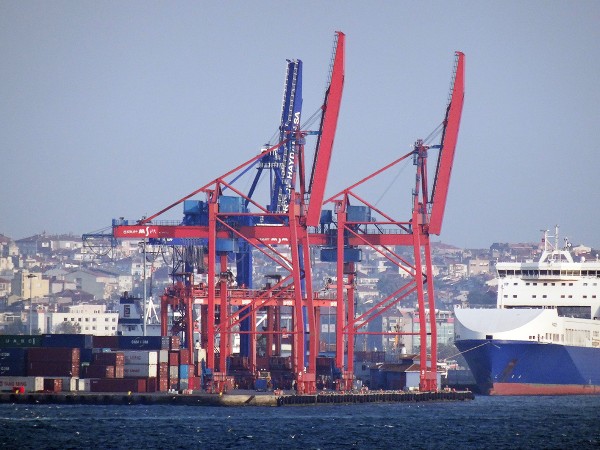 Turkey has experienced rapid economic growth in recent years and has attracted large inflows of foreign capital. The chart below illustrates how growth in real GDP in Turkey in most years since 2000 has considerably exceeded that in the OECD as a whole (click here for a PowerPoint). As you can see from the chart, growth in Turkey over the period has averaged 4.5%, while that in the OECD has averaged just 1.8%.
Turkey has experienced rapid economic growth in recent years and has attracted large inflows of foreign capital. The chart below illustrates how growth in real GDP in Turkey in most years since 2000 has considerably exceeded that in the OECD as a whole (click here for a PowerPoint). As you can see from the chart, growth in Turkey over the period has averaged 4.5%, while that in the OECD has averaged just 1.8%.
Indeed, Turkish growth has been compared with that of the BRICs (Brazil, Russia, India and China). However, like the BRICs, Turkey has been experiencing slowing growth in the past few months. Indeed, the slowdown has been especially marked in Turkey.
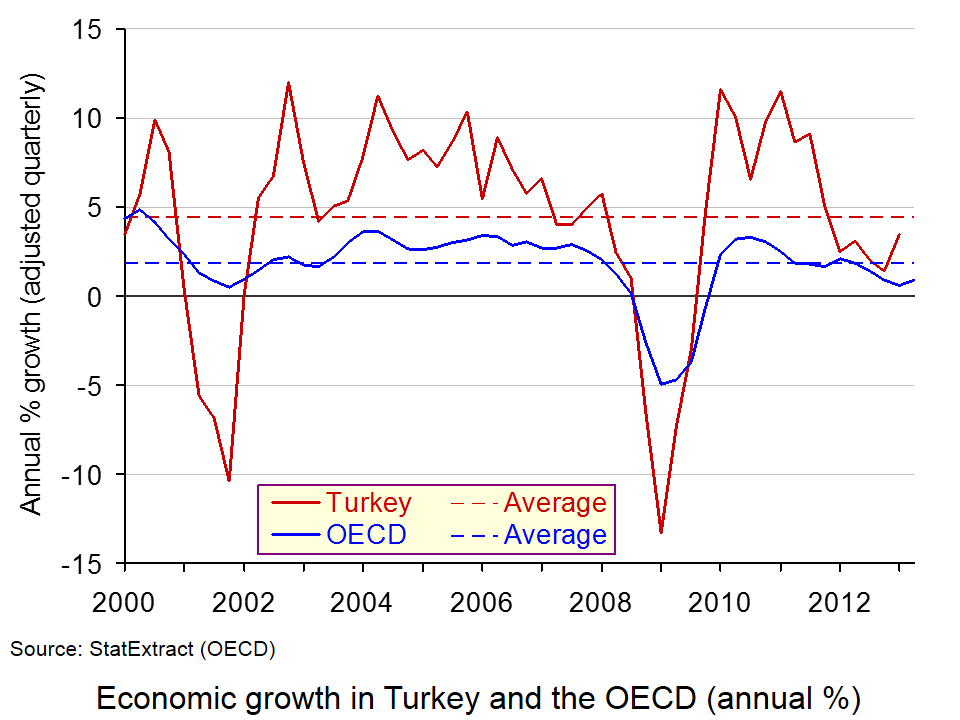 In recent years Turkey has benefited from large inflows of foreign capital. Partly these were direct investment flows, encouraged by a large and rapidly growing internal market, boosted by a rapid expansion of consumer credit, and also by a growing export sector. But to a large extent, especially in recent years, there has been a large rise in portfolio and other investment inflows. This has been encouraged by a large increase in global money supply resulting from policies of quantitative easing in the USA and other developed countries.
In recent years Turkey has benefited from large inflows of foreign capital. Partly these were direct investment flows, encouraged by a large and rapidly growing internal market, boosted by a rapid expansion of consumer credit, and also by a growing export sector. But to a large extent, especially in recent years, there has been a large rise in portfolio and other investment inflows. This has been encouraged by a large increase in global money supply resulting from policies of quantitative easing in the USA and other developed countries.
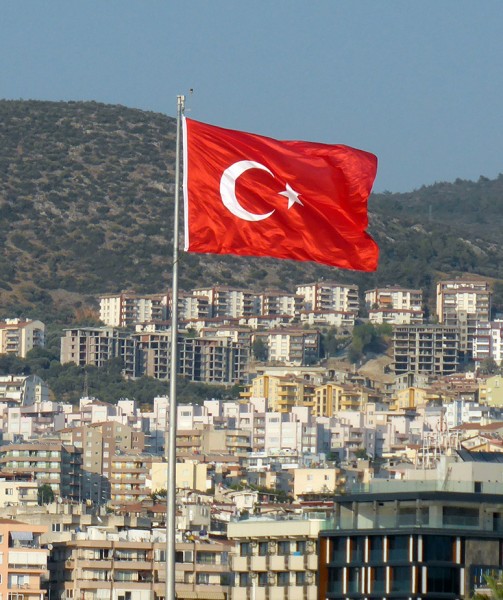 But the economic climate has changed. First investors have become worried about the conflict in Syria escalating and this impacting on Turkey. Second Turkey’s large financial account surpluses have allowed it to run large current account deficits and have maintained a high exchange rate. Third the tapering off and possible reversal of quantitative easing have led to recent outflows of finance from various countries perceived as being vulnerable, including Turkey.
But the economic climate has changed. First investors have become worried about the conflict in Syria escalating and this impacting on Turkey. Second Turkey’s large financial account surpluses have allowed it to run large current account deficits and have maintained a high exchange rate. Third the tapering off and possible reversal of quantitative easing have led to recent outflows of finance from various countries perceived as being vulnerable, including Turkey.
The effect of this has been a depreciation of the Turkish lira and upward pressure on inflation. The lira has fallen by 14% since the beginning of 2013 and by nearly 7% since the beginning of August alone.
The question is whether the supply side of the Turkish economy has become robust enough to allow the country to ride out its current difficulties. Will foreign investors have sufficient faith in the long-term potential of the Turkish economy to continue with direct investment, even if short-term financial inflows diminish?
Articles
Turkey’s economy faces uncertainties amid possible military intervention in Syria Xinhua, Fu Peng (29/8/13)
Turkey may cut 2014 growth target to 4% Turkish Daily News (8/9/13)
Turkish lira at record low, threatening growth Daily News Egypt (7/9/13)
Turkish lira may need higher interest rates to escape emerging markets rout Reuters, Sujata Rao and Seda Sezer (20/8/13)
Turkey Economic Crisis: Crises from Both Sides Wealth Daily, Joseph Cafariello (9/8/13)
Western financial prescription has made Turkey ill The Observer, Heather Stewart (1/9/13)
Turkish Deputy PM Babacan calm amid economic fluctuations Turkish Daily News (8/9/13)
 The Fragile Five BBC News, Linda Yueh (26/9/13)
The Fragile Five BBC News, Linda Yueh (26/9/13)
Data
Economic growth rates (annual) for Turkey, Brazil, Russia, India and China: 2000–13 IMF Economic Outlook Database (April 2013)
Quarterly growth rates of real GDP for OECD countries and selected other countries and groups of countries OECD StatExtracts
Turkey and the IMF IMF
Turkey: data World Bank
Links to Turkish Official Statistics Offstats
Country statistical profile: Turkey OECD Country Statistical Profiles
Spot exchange rate, Turkish Lira into Dollar Bank of England
Questions
- Why has the Turkish economy experienced such rapid growth in recent years and especially from 2010 to 2012?
- Why has Turkish growth slowed over the past year?
- Why has “Western financial prescription made Turkey ill”
- Why has the Turkish lira depreciated? What has determined the size of this depreciation?
- What are the beneficial and adverse effects of this depreciation?
- Why must any surplus on the combined financial and capital accounts of the balance of payments be matched by a corresponding deficit on the current account?
- How is a tapering off of quantitative easing likely to impact on developing countries? What will determine the size of this impact?
- Istanbul has lost its bid to host the 2020 Olympic Games? How is this likely to affect the Turkish economy?
 One of the reasons why it is so hard to forecast economic growth and other macroeconomic indicators is that economies can be affected by economic shocks. Sometimes the effects of shocks are large. The problem with shocks is that, by their very nature, they are unpredictable or hard to predict.
One of the reasons why it is so hard to forecast economic growth and other macroeconomic indicators is that economies can be affected by economic shocks. Sometimes the effects of shocks are large. The problem with shocks is that, by their very nature, they are unpredictable or hard to predict. On Monday 3 March, stock markets fell around the world. The biggest falls were in Russia (see chart). In other stock markets, the size of the falls was directly related to the closeness of trade ties with Russia. The next day, with a degree of calm descending on the Crimea and no imminent invasion by Russia of other eastern parts of Ukraine, stock markets rallied.
On Monday 3 March, stock markets fell around the world. The biggest falls were in Russia (see chart). In other stock markets, the size of the falls was directly related to the closeness of trade ties with Russia. The next day, with a degree of calm descending on the Crimea and no imminent invasion by Russia of other eastern parts of Ukraine, stock markets rallied.












